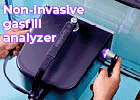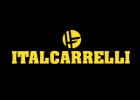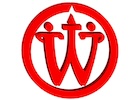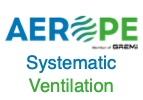Thanks to laser technology, the glass industry can do something that would be almost inconceivable in any other sector.
Laser finishing treatment enables manufacturers to enhance the value of largely standardised products and increase their functionality. With prices for traditional IG units and facade cladding coming under increasing pressure, using laser upgrades to create bird protection glass, RF-transparent glass and anti-bacterial glass gives manufacturers the chance to tap into new target markets and increase their profit margins.
HEGLA boraident of Halle/Saale, Germany, is a company that specialises in these types of laser applications. The HEGLA Laserbird is a system that can manipulate the top layer of a pane of glass or use laser printing to alter its properties, thus providing the glass with an additional benefit for the customer. “The high degree of flexibility and precision that laser technology offers is what sets it apart from other processes. You can switch between different finishing treatments without wasting time retooling, and the system can be used to work on both individual panes and finished IG units,” explains Dr Thomas Rainer, Head of Development at HEGLA boraident.
Bird protection and RF-transparent glass
RF-transparent glass is created by removing a layer of the coating in a dodecagonal pattern with extremely thin lines. Once this is done, the interior behind the pane of glass in question will enjoy full data and phone reception – perfect for conference rooms, office buildings and public transport. The pattern is almost invisible, and imperceptible when used as part of a finished IG unit.
Birds can be protected from colliding with glass by lasering a different shape into its coating. For optimum results, Dr Rainer recommends applying the laser to the pyrolytic coating on the outside of the IG unit. However, the glass can also be functionalised without this layer. In such cases, a laser printing process is used to apply a pattern that birds will recognise as an insurmountable obstacle onto the outside of the facade glass. “In Europe alone, 250,000 birds die every day from collisions with glass windows and doors,” the Head of Development reports. “New legal requirements at the international level have opened up a new market for these applications, and the demand for these types of glass in public and commercial buildings is growing in many local markets as well.” The print is weatherproof, scratchproof and lightfast.
Silver ions for an antibacterial effect
An antibacterial effect can be generated using a new, patented finishing treatment that involves embedding silver ions in the surface of a pane of glass. When bacteria and germs come into contact with such a surface, the silver ions reliably kill them off. There are plenty of potential applications for this technology, especially in sectors with strict hygiene requirements, such as hospitals, commercial kitchens and public buildings.
Technical application
The physical conductivity of the top glass layers also makes them suitable for technical applications. For example, the low-E layer can be textured in such a way that it creates conductor circuits. This technique can be used to slightly heat up the glass panes in cooling units to prevent them fogging up. This technology is especially popular in conservatories in cold countries, which need to be protected from excessive snow loads. Conductive glass can also be used for burglary protection systems, triggering an alarm if the glass is damaged or broken.
Gentle decoating in a top-quality process
Whether you want to perform edge decoating or partial coating removal to create lighting effects, laser technology makes the process gentle and precise. “The lasered area is crystal-clear and free of scratches, which means this form of decoating produces perfect results even for the high standards of structural glazing and visible areas in general,” the Head of Development and authorised signatory for the company explains. The surface of the glass remains completely intact, as do its dazzling looks.
App control and automation
The Laserbird’s various finishing treatment programs can be selected via an app-based control system. The lasering jobs can be created in advance using the work preparation software in your office, then you can save them in your ERP system or directly in the Laserbird system itself. Once the job has been selected, the glass is automatically transported into the system and the lasering begins. The Laserbird system can also be integrated into your ERP system for full data access, or you can use glass markings and an automated scanner to create a localised control system – thus making the experience even more user-friendly. As soon as the pane of glass or IG unit is available, the system scans the marking and the finishing treatment is activated. If your Laserbird is fitted with this scanner-based control system, the glass can be loaded onto it from a rack or harp rack in any order. Alternatively, it can also be connected directly via an AGV, for example. “The best place to position the Laserbird is at the end of your production line, as a stand-alone process station,” Dr Rainer recommends. “This keeps the finishing treatment separate from the glass flow, so it can be optimised to suit the process and delivery deadlines at hand.”
























